In a divorce, the laws of equitable distribution distinguish marital property from separate property. Technically, only marital property, that is, proper...
After a car crash in Nevada, the State of Nevada Traffic Accident Report, filled out by the investigating police officer, becomes a critical piece of evidence. An insurance company will likely review the police report to help determine fault for the accident and decide whether to approve or deny a claim. Moreover, if the officer is eventually asked to testify in court, that testimony will probably be based on the report.
That’s why it’s important to understand what your report says and how it might affect your case. Here’s what you need to know.
State of Nevada Traffic Accident Report
https://www.nhtsa.gov/sites/nhtsa.dot.gov/files/documents/nv_crashform_01_04.pdf

Vehicle Information Sheet Page 1
The event number, accident number and agency number should match across all pages. The vehicle number refers to this vehicle whenever it’s mentioned in the report.
The first section describes the vehicle’s actions and direction of travel at the time of the incident. Take note of the “at fault” checkbox, but remember that this is the investigating officer’s opinion, not necessarily the final word.
Click here to download a printable PDF of How to Read Your Nevada Car Accident Report.
The next section describes the driver of this vehicle, including contact information, injury information, and whether there was a drug or alcohol test performed. Pay attention to the “Driver Factors” section, which may affect liability.
The next section is about the vehicle itself, including its year, make and model, the owner’s name and address, and the insurance information. “Vehicle Factors” is a bit of a misnomer – it describes actions taken by the driver, such as failure to yield or reckless driving.
In the bottom right, the investigating officer fills in the sequence of events and identifies the parts of the vehicle that were damaged. This can be cross-referenced with seating information to verify injuries.
If the driver of this vehicle was given a citation, it’s documented at the bottom.
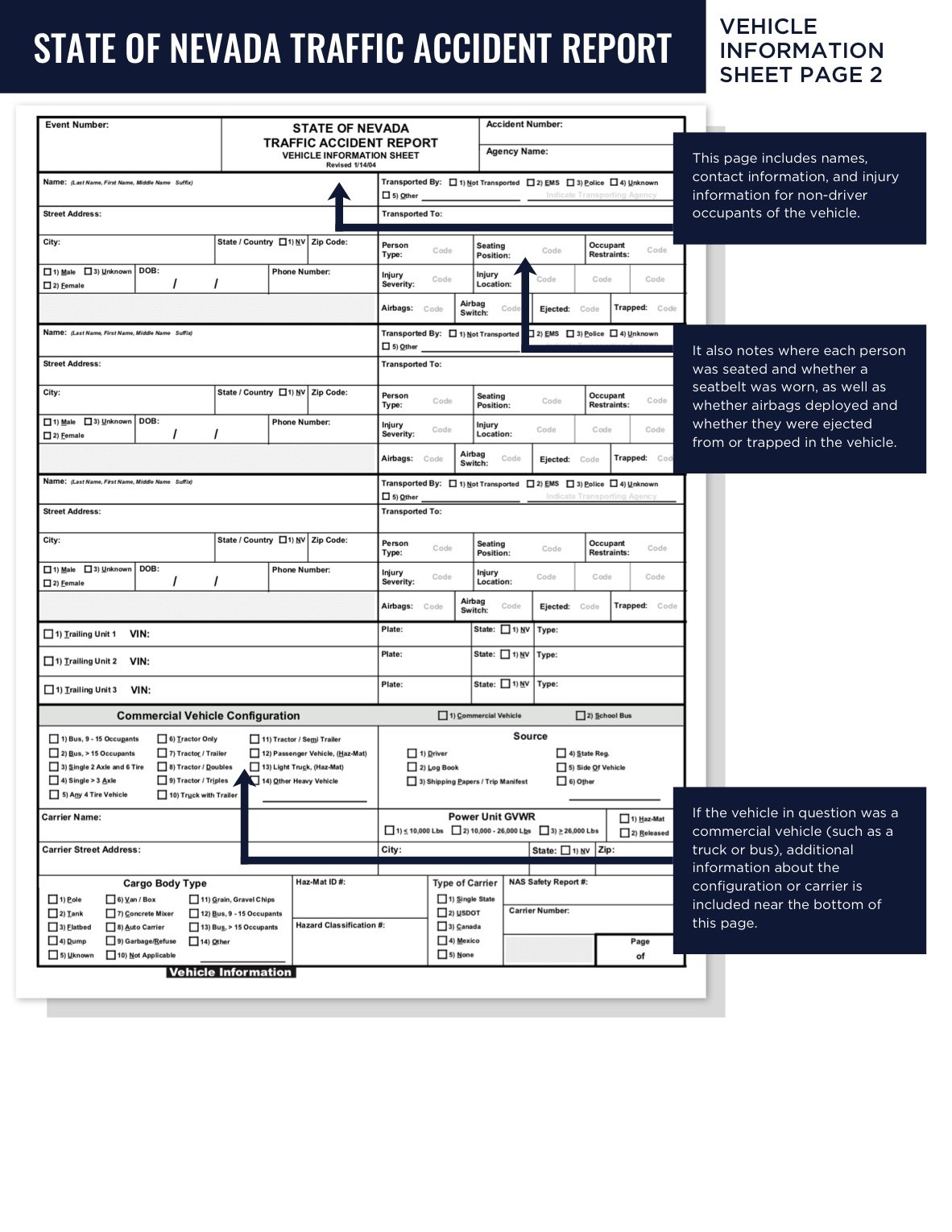
Vehicle Information Sheet Page 2
This page includes names, contact information, and injury information for non-driver occupants of the vehicle.
It also notes where each person was seated and whether a seatbelt was worn, as well as whether airbags deployed and whether they were ejected from or trapped in the vehicle.
If the vehicle in question was a commercial vehicle (such as a truck or bus), additional information about the configuration or carrier is included near the bottom of this page.
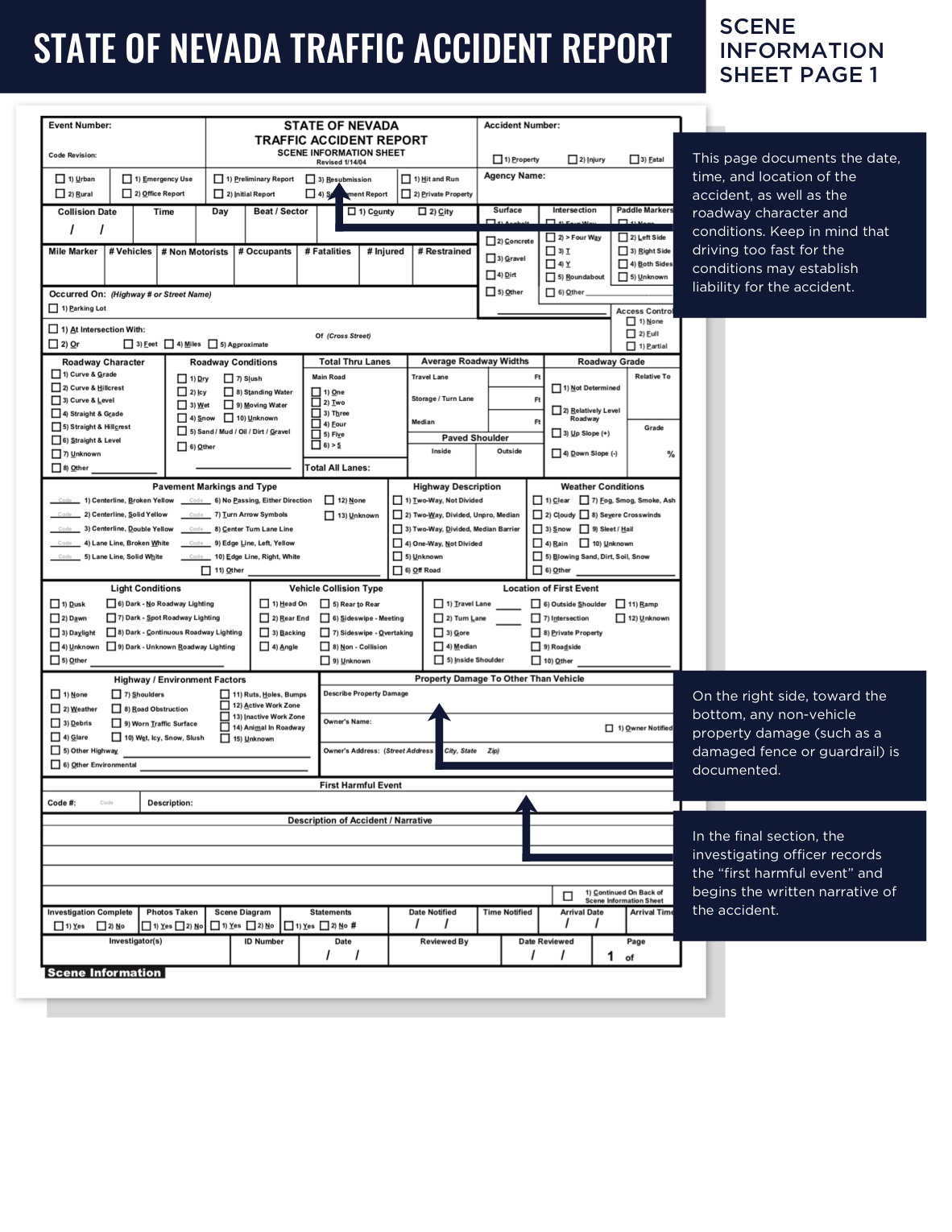
Scene Information Sheet Page 1
This page documents the date, time, and location of the accident, as well as the roadway character and conditions. Keep in mind that driving too fast for the conditions may establish liability for the accident.
On the right side, toward the bottom, any non-vehicle property damage (such as a damaged fence or guardrail) is documented.
In the final section, the investigating officer records the “first harmful event” and begins the written narrative of the accident.
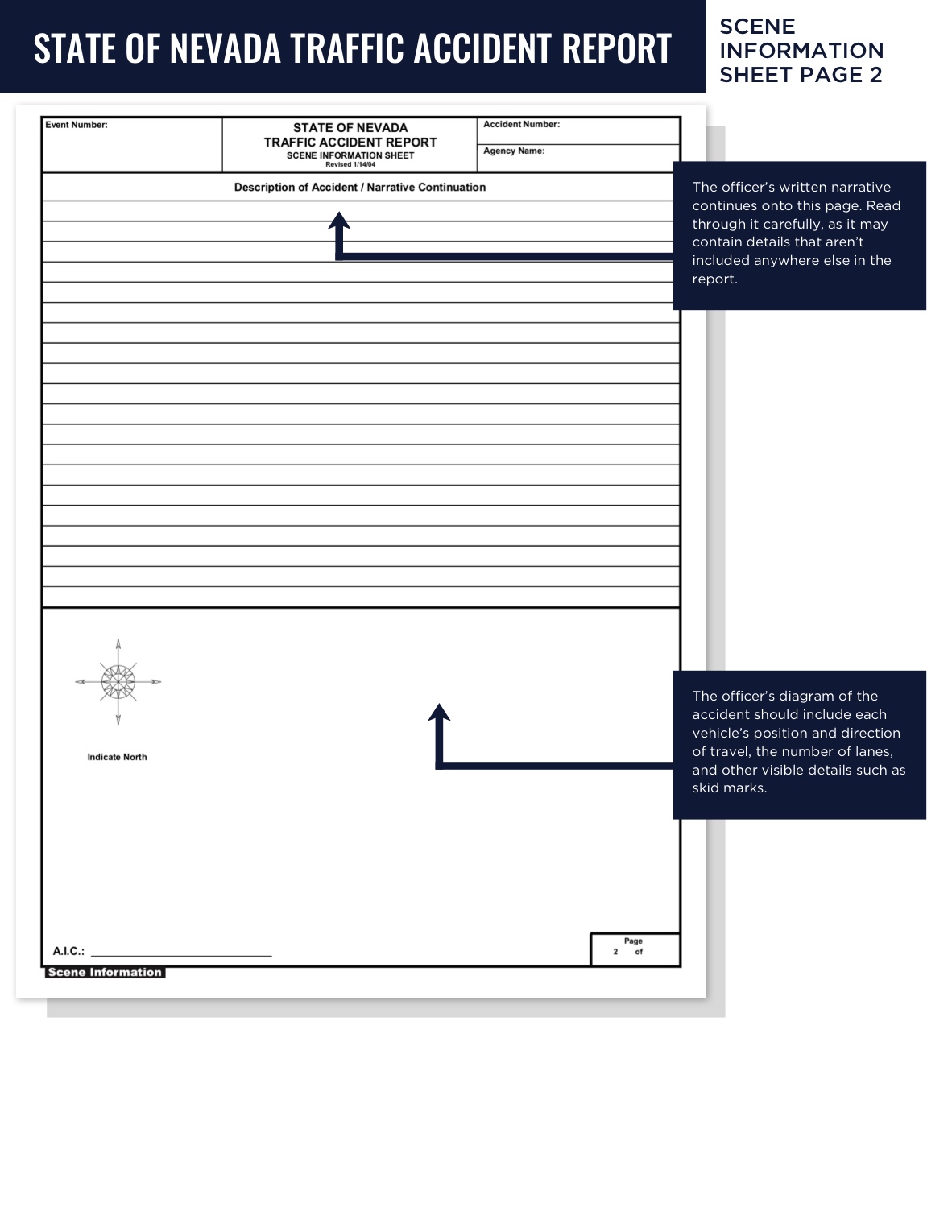
Scene Information Sheet Page 2
The officer’s written narrative continues onto this page. Read through it carefully, as it may contain details that aren’t included anywhere else in the report.
The officer’s diagram of the accident should include each vehicle’s position and direction of travel, the number of lanes, and other visible details such as skid marks.
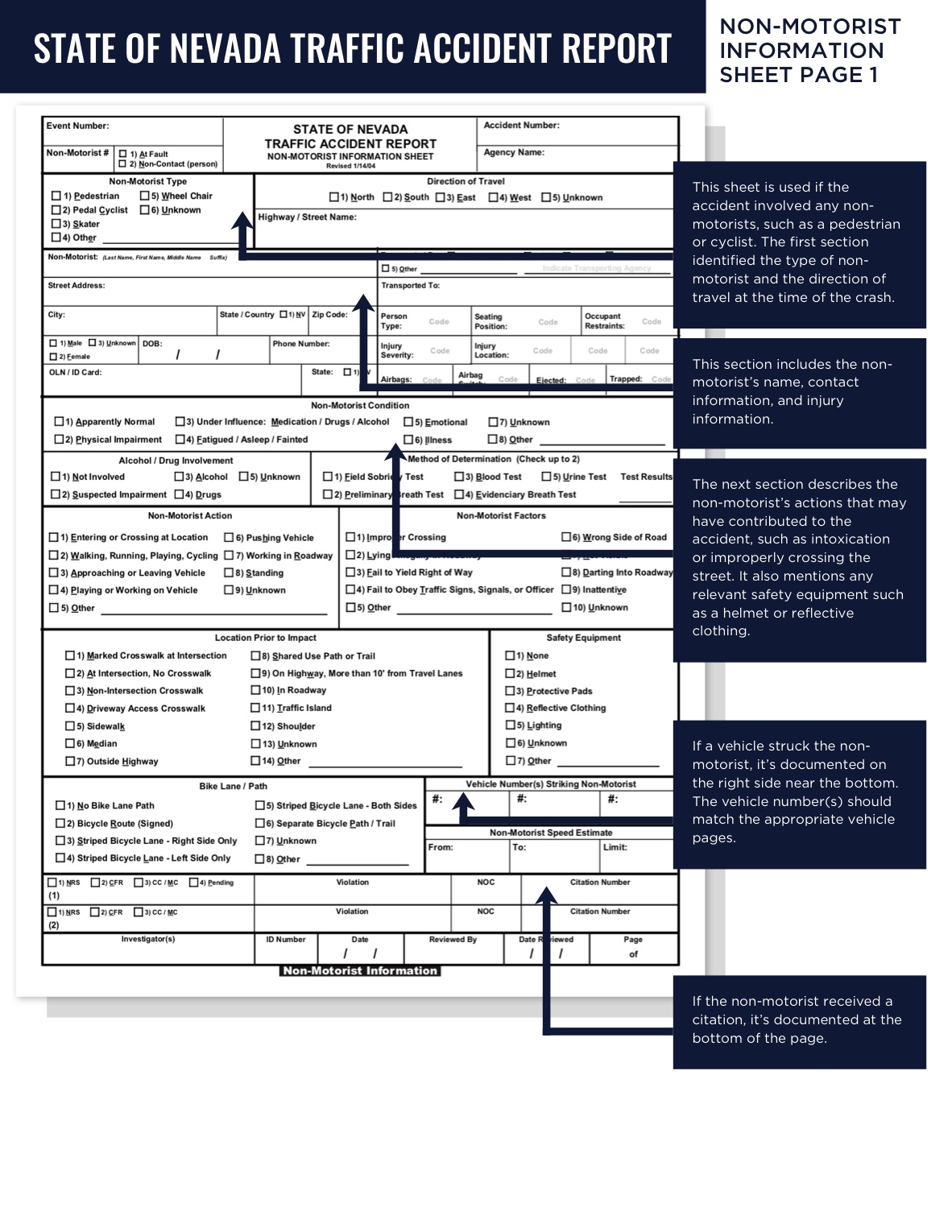
Non-Motorist Information Sheet Page 1
This sheet is used if the accident involved any non-motorists, such as a pedestrian or cyclist. The first section identified the type of non-motorist and the direction of travel at the time of the crash.
This section includes the non-motorist’s name, contact information, and injury information.
The next section describes the non-motorist’s actions that may have contributed to the accident, such as intoxication or improperly crossing the street. It also mentions any relevant safety equipment, such as a helmet or reflective clothing.
If a vehicle struck the non-motorist, it’s documented on the right side near the bottom. The vehicle number(s) should match the appropriate vehicle pages.
If the non-motorist received a citation, it’s documented at the bottom of the page.
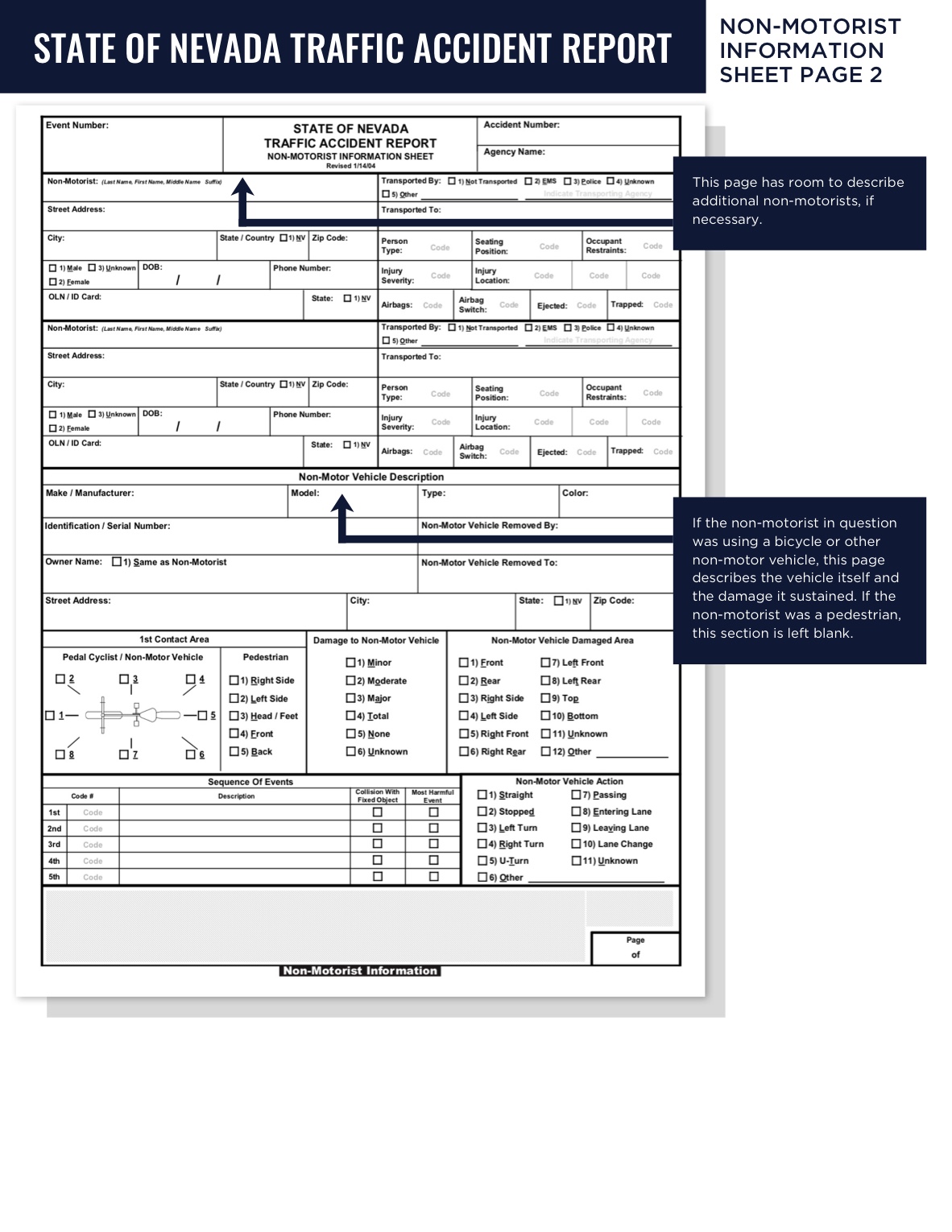
Non-Motorist Information Sheet Page 2
This page has room to describe additional non-motorists, if necessary.
If the non-motorist in question was using a bicycle or other non-motor vehicle, this page describes the vehicle itself and the damage it sustained. If the non-motorist was a pedestrian, this section is left blank.
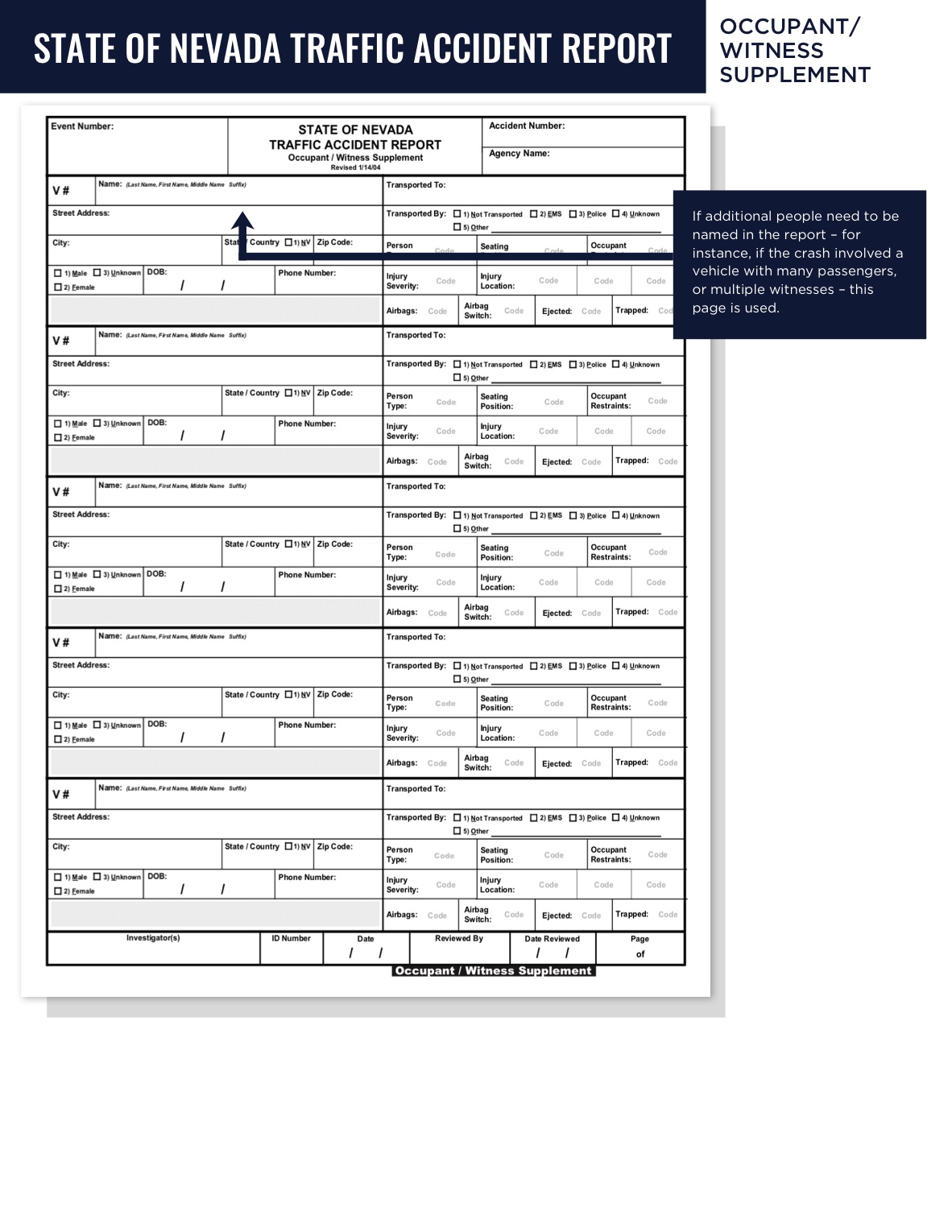
Occupant/Witness Supplement
If additional people need to be named in the report – for instance, if the crash involved a vehicle with many passengers, or multiple witnesses – this page is used.





